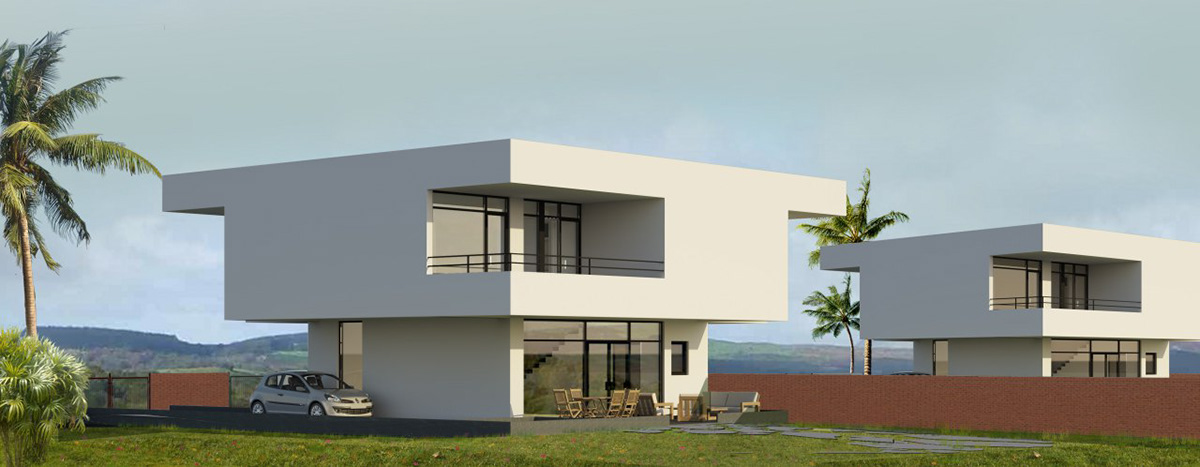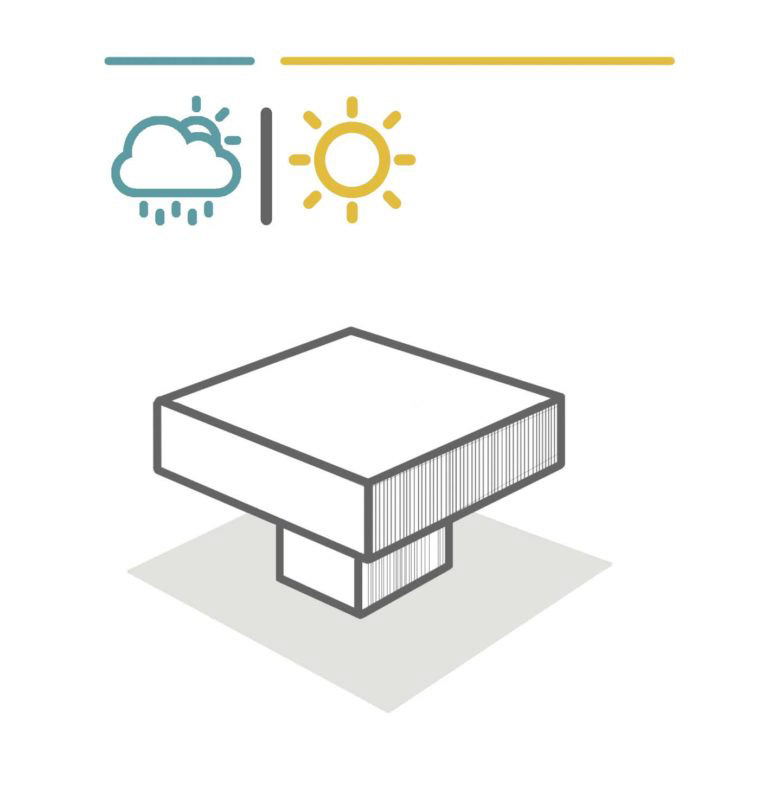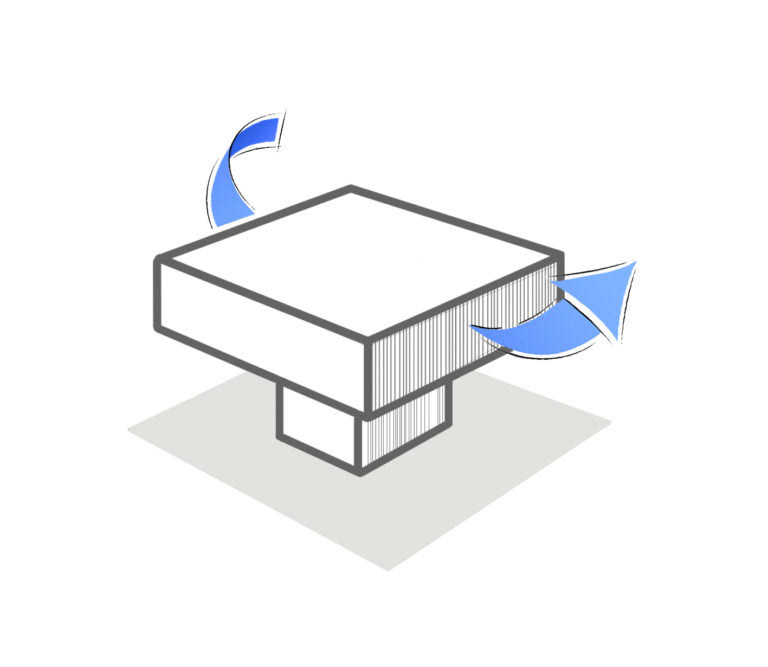


GENERAL DATA
STRUCTURAL AND ENGINEERING SOLUTIONS
The house is leaning on four columns with big consoles all over the perimeter, which allows (with an optimal span of 7.8 m, consoles of 3.1 m, optimal beam thickness of 55 cm) to have over 227 m² of ventilated residential territory. The staircase to the second floor is positioned in the right corner of the square construction of the building, in order to achieve maximum efficiency by minimising the distance to rooms situated in each direction, thus eliminating the excessive length and quantity of corridors.
Load-bearing structure of the building is a monolithic reinforced concrete frame.
Foundations: foundation type and its depth are defined in the project as a result of geotechnical studies;
Exterior walls: foam block, monolithic concrete walls, facade marble slabs;
Partitions: 100 mm and 150 mm foam blocks, bricks;
Covering: monolithic reinforced concrete slabs;
Stairs: reinforced concrete, half-pace;
Roof: flat combined, with an internal drainage;
Windows: aluminum frames with heat-resistant glass;
Doors: Interior doors – wooden; entrance – glass/metal;
Flooring: marble.
Pillars: are under 100% load.
The house is leaning on four columns with big consoles all over the perimeter, which allows (with an optimal span of 7.8 m, consoles of 3.1 m, optimal beam thickness of 55 cm) to have over 227 m² of ventilated residential territory. The staircase to the second floor is positioned in the right corner of the square construction of the building, in order to achieve maximum efficiency by minimising the distance to rooms situated in each direction, thus eliminating the excessive length and quantity of corridors.
Load-bearing structure of the building is a monolithic reinforced concrete frame.
Foundations: foundation type and its depth are defined in the project as a result of geotechnical studies;
Exterior walls: foam block, monolithic concrete walls, facade marble slabs;
Partitions: 100 mm and 150 mm foam blocks, bricks;
Covering: monolithic reinforced concrete slabs;
Stairs: reinforced concrete, half-pace;
Roof: flat combined, with an internal drainage;
Windows: aluminum frames with heat-resistant glass;
Doors: Interior doors – wooden; entrance – glass/metal;
Flooring: marble.
Pillars: are under 100% load.
INSPIRATION
Structural efficiency in nature
Techtonics in architecture
Structural efficiency in nature
Techtonics in architecture

Optimisation and striving for maximum efficiency of the carrier or static systems and
forms is common in nature. There are many examples where nature optimises shapes
through its bearing system. Nature always optimises forms, urging for more sustainable
systems and high efficiency.
forms is common in nature. There are many examples where nature optimises shapes
through its bearing system. Nature always optimises forms, urging for more sustainable
systems and high efficiency.

Creation of shade
To escape the heat, it is necessary to prevent the sun’s
rays from entering the house. Common systems are the
slope of the roof and eaves, vegetation and awnings,
umbrellas, curtains and blinds. In short, the aim is to avoid
using air conditioning as it consumes energy. *Studying
the breezes and the effect of the sun’s rays defined the
position of this house. The built-in overhangs give shade in
the summer.
To escape the heat, it is necessary to prevent the sun’s
rays from entering the house. Common systems are the
slope of the roof and eaves, vegetation and awnings,
umbrellas, curtains and blinds. In short, the aim is to avoid
using air conditioning as it consumes energy. *Studying
the breezes and the effect of the sun’s rays defined the
position of this house. The built-in overhangs give shade in
the summer.

Cross ventilation If the area’s breezes and the position of windows,
doors and balconies have been factored in, air currents can be taken advantage
of to cool the house and avoid or reduce the use of air conditioning.
A cool tower is another mechanism for cooling as it forces out hot air
through openings in the upper part of the house.
doors and balconies have been factored in, air currents can be taken advantage
of to cool the house and avoid or reduce the use of air conditioning.
A cool tower is another mechanism for cooling as it forces out hot air
through openings in the upper part of the house.



